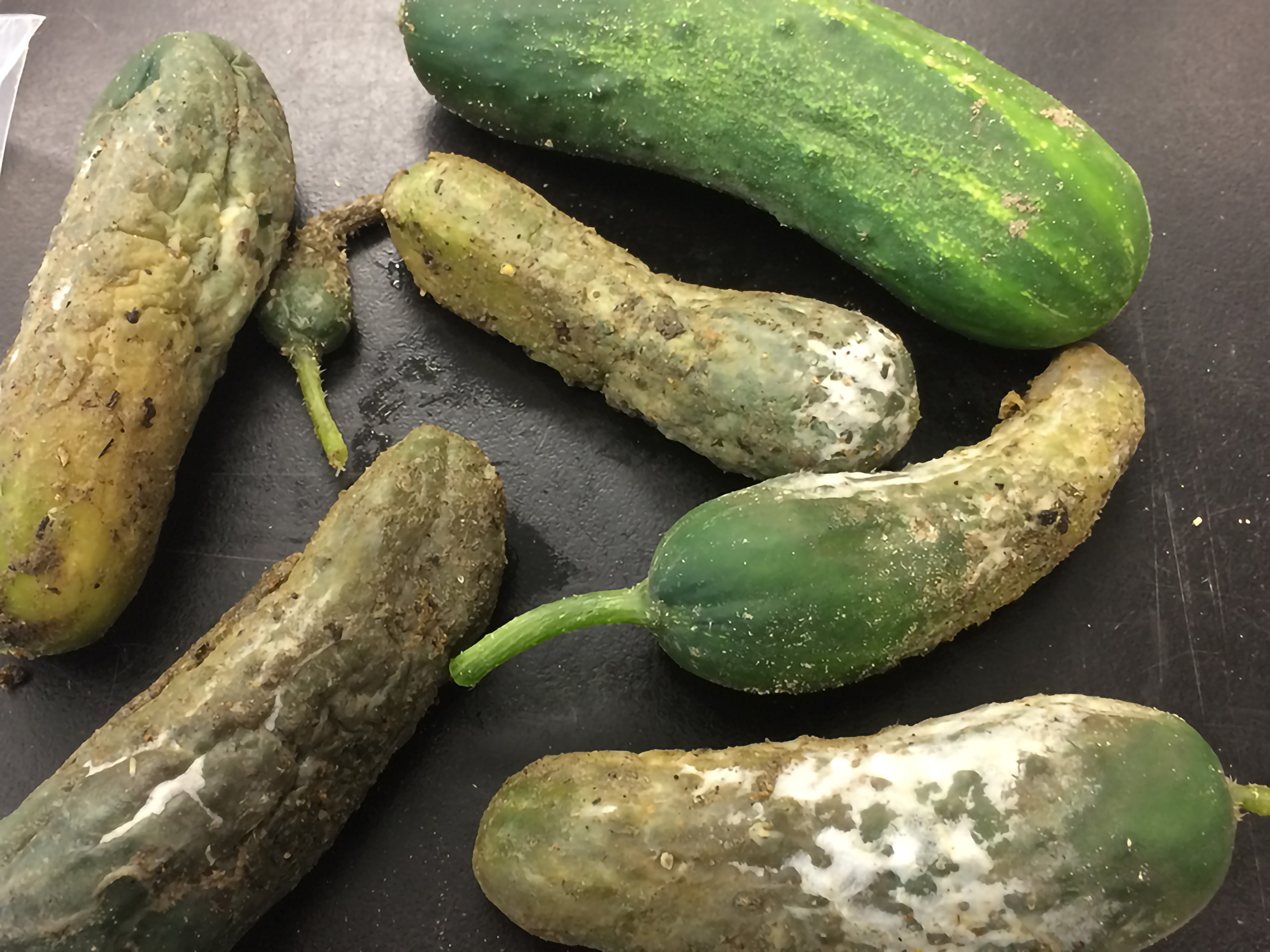This is a significant discovery because it changes how we approach disease management in cucurbit production systems.
Anthony “Tony” Keinath, Clemson University plant pathologist
A newly identified plant pathogen is threatening pickling cucumber crops in South Carolina, raising concerns among growers and researchers alike.
In a groundbreaking study led by Anthony “Tony” Keinath, a plant pathologist at Clemson University’s Coastal Research and Education Center, scientists have confirmed that Pythium deliense—a species previously undocumented in the United States as a cause of fruit rot—is responsible for cottony leak disease in cucumbers.

Cottony leak is a destructive soft rot that affects cucurbit crops, including cucumbers, melons and pumpkins. Diseased fruit becomes water-soaked, mushy and covered in a white, fluffy, fungal-like growth. The disease is especially problematic for pickling cucumber growers, whose crops are highly susceptible and often grown in rotation with other crops.
“This is the first report of Pythium deliense as a cause of cottony leak on cucurbit fruit in the United States,” said Keinath. “It’s a significant discovery because it changes how we approach disease management in cucurbit production systems.”
A surprising discovery
The study, conducted during the 2022 and 2023 growing seasons, involved sampling cucumbers from five commercial fields in Bamberg and Calhoun counties. The scientists collected 33 samples of Pythium from rotting cucumbers, with 28 found to be P. deliense and five as P. aphanidermatum, a more commonly known pathogen associated with cottony leak.
“The amount of P. deliense found was unexpected,” Keinath explained. “Historically, P. aphanidermatum has been the primary species associated with cottony leak in cucumbers. Finding P. deliense as the dominant pathogen suggests a shift in the disease landscape.”
Using DNA sequencing, the team confirmed the identity of the isolates. An analysis revealed two distinct genotypes of P. deliense, both closely related to reference strains from international databases.
Environmental and agronomic factors at play
Cottony leak outbreaks were most severe in low, wet areas of fields—particularly in depressions created by tractor tires and center pivot irrigation systems. These conditions, combined with high soil moisture and warm temperatures, created an ideal environment for Pythium infection.
“Cucurbit diseases caused by Pythium are strongly favored by high soil moisture,” Keinath said. “Growers should consider leveling their fields to eliminate low spots and avoid planting cucumbers in areas prone to water accumulation.”
The scientists also examined the impact of crop rotation on the disease. Fields previously planted with peanut or soybean—both known hosts of P. deliense—had significantly higher rates of infection than those rotated with coastal Bermudagrass, a non-susceptible crop.
“Our data show that Pythium recovery was 83.3% in fields previously cropped to peanut or soybean, compared to 55% in fields with coastal Bermudagrass,” Keinath said. “This suggests that crop rotation plays a critical role in disease management.”
The rotation crop grown immediately before cucumber planting—typically cotton, corn or watermelon—did not significantly affect the regrowth of Pythium. However, the presence of peanuts two years prior appeared to be a key factor in Pythium’s ability to cause damage and disease in a host plant.
“Peanut pods can remain in the soil after harvest and serve as a reservoir for P. deliense,” Keinath noted. “This pathogen can then infect cotton roots the following year, further increasing the risk before cucumbers are planted.”

Pathogenicity and virulence
To determine the pathogen’s ability to cause damage and disease in host plants, the researchers conducted tests on cucumber fruit and seedlings. The results revealed P. aphanidermatum was more aggressive on the fruit, while P. deliense caused more severe damping off in seedlings. Damping off is a fatal disease of seedlings caused by soil-borne fungi like Pythium and Rhizoctonia.
These findings are important for growers, especially those using susceptible cultivars or planting in fields with a history of Pythium diseases.
“Understanding the specific Pythium species involved helps us tailor management strategies,” Keinath emphasized. “For example, if P. deliense is prevalent, growers may need to focus more on seedling protection and crop rotation.”
Limited fungicide options
Managing cottony leak with fungicides presents challenges. Both P. deliense and P. aphanidermatum are naturally insensitive to oxathiapiprolin (Orondis products), a commonly used fungicide, leaving growers with few chemical options, primarily mefenoxam-containing products (Ridomil Gold).
“Fungicide application is difficult once cucumber vines spread and form a dense canopy,” Keinath explained. “That’s why cultural practices like crop rotation and field drainage are so important.”
A broader shift in pathogen dynamics?
The emergence of P. deliense in South Carolina cucumbers may reflect broader changes in pathogen dynamics driven by climate and agronomic practices. The species is known to thrive in warm climates and has been reported on cucurbit seedlings in New Guinea, France and Central America.
“Increasing soil temperatures could be favoring warm-season pathogens like P. deliense over cool-season species such as Globisporangium ultimum,” Keinath said. “This shift may be occurring in other regions as well. We need more data to understand the full extent.”
The study recommends expanded sampling in areas where peanuts and soybeans are grown in rotation with cucumbers, such as North Carolina and Georgia. Soil sampling and pathogen identification from other cucurbit crops could help determine whether P. deliense is spreading or replacing other species.
“We need to verify whether this shift is happening elsewhere,” Keinath said. “It’s possible that P. deliense is more widespread than previously thought, and that it’s been overlooked because it resembles P. aphanidermatum under the microscope.”
Looking ahead
The discovery of P. deliense as a causal agent of cottony leak marks a turning point in cucurbit disease research and management. It underscores the importance of molecular diagnostics, field surveillance and integrated pest management strategies.
“Growers, Extension agents and researchers need to be aware of this pathogen,” Keinath concluded. “By adjusting crop rotations, improving field conditions and using accurate diagnostics, we can reduce the impact of cottony leak and protect our cucumber crops.”
This research is supported by the USDA Agricultural Marketing Service through the South Carolina Specialty Crop Block Grant Program and the Hatch project at Clemson University Experiment Station.








